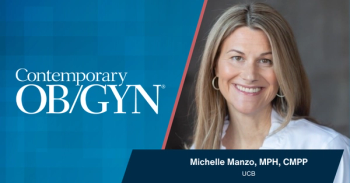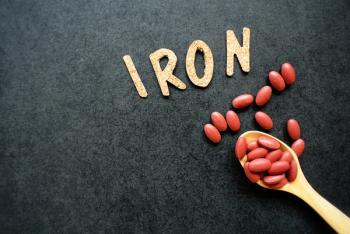
Subcutaneously administered Menopur(R), a new highly purified human menopausal gonadotropin
The safety and tolerability of a new highly purified, urine-derived human menopausal gonadotropin (hMG) preparation [Menopur(R)] was compared with a currently available hMG [Repronex (R)] in women undergoing in vitro fertilization (IVF).
Reprinted with permission
An online journal published by
Published 9 November 2005
Background
The safety and tolerability of a new highly purified, urine-derived human menopausal gonadotropin (hMG) preparation [Menopur(R)] was compared with a currently available hMG [Repronex (R)] in women undergoing in vitro fertilization (IVF).
Methods
This was a randomized, open-label, parallel-group, multicenter study conducted in subjects undergoing IVF
Results
Significantly fewer subjects in the Menopur (R) group reported injection site reactions (P < 0.001) compared to the Repronex (R) group. Overall, there was no statistically significant difference in the incidence of AEs between the two treatment groups.
Conclusion
Menopur (R) SC offers a greater safety and tolerability profile compared to Repronex (R) SC.
Background
Zondek and colleagues were the first to propose that the pituitary gland secretes hormones that stimulate the gonads [1]. This hypothesis was later confirmed with the identification of two different hormones, follicle-stimulating hormone (FSH) and luteinizing hormone (LH) [2]. These advances in the understanding of the human reproductive process converged in 1958 with the successful clinical use of pituitary gonadotropins to induce ovulation in anovulatory women [3].
Development of simple extraction and purification techniques led to the production of human menopausal gonadotropins (hMG) in quantities sufficient for clinical use. In 1962, the first pregnancy resulting from the use of a urine-derived hMG for follicular stimulation was reported [4]. Since then, human-derived gonadotropins have remained a reliable and safe treatment for infertility. However, the purity of early hMG preparations was low and the majority of the injectant preparations consisted of uncharacterized urinary proteins [5]. The uncharacterized proteins produced adverse injection site reactions when administered intramuscularly (IM) and the product could not be administered subcutaneously (SC). Newer purification techniques applied to the manufacturing of hMG resulted in enhanced purity and enabled SC administration. However, mild to moderate injection site reactions were still common. Most recently, modern day purification techniques have resulted in the availability of a new, high purity hMG preparation that has nearly eliminated injection site reactions.
The purification process for Repronex® included at least 24 steps involving adsorptions, dialysis and precipitations, as well as ionic, cationic, and hydrophobic exchange chromatography [6]. Advances in these manufacturing techniques and the inclusion of additional purification steps have now produced a new highly purified hMG (Menopur® , 75 IU LH:75 IU FSH; Ferring Pharmaceuticals Inc., Suffern, New York) that is nearly devoid of uncharacterized proteins. This high purity hMG was developed to reduce the frequency of injection site reactions. Therefore, we conducted a clinical trial to compare the safety and tolerability of Menopur® with the currently available hMG preparation, Repronex® (75 IU LH:75 IU FSH; Ferring Pharmaceuticals Inc.) in women undergoing controlled ovarian hyperstimulation (COH) for in vitro fertilization (IVF).
Methods
This was a randomized, open-label, parallel-group, multicenter study comparing one cycle of treatment with Menopur® SC or Repronex® SC at a dose of 75 to 450 IU/day administered as a single, daily injection for up to 12 days in infertile women undergoing COH for IVF. Each subject participated in only one cycle of IVF. Fifteen centers participated in the study, each of which obtained institutional review board approval. Written informed consent was obtained from all participants prior to screening and study enrollment.
Subjects
Subjects had to meet the following eligibility criteria to participate in the study: nonsmoking, 18 to 39 years of age with regular ovulatory cycles (24 to 35 days); have a diagnosis of unexplained infertility or infertility due to tubal factor; stage I or II endometriosis; normal ovaries and uterus on transvaginal ultrasonography; normal serum levels of estradiol (E2), prolactin, LH, FSH, testosterone, dehydroepiandrosterone sulfate, and thyroid-stimulating hormone; and have a body mass index of ≤ 34. In addition, all subjects were seronegative for hepatitis B and C and HIV and had a negative pregnancy test prior to initiating treatment. A semen analysis performed on a sample from either the subject's partner or the designated donor had to be normal according to the criteria established by the World Health Organization. A minimum of one menstrual cycle without IVF/assisted reproductive therapy (ART) treatment was required prior to screening. Subjects were excluded from participation if there was evidence of any clinically relevant systemic disease or any surgical or medical condition that could interfere with the absorption, metabolism, or excretion of gonadotropins. Subjects were not to have had a positive pregnancy test within three months of baseline screening and were also excluded from the study if they had undergone three or more prior ART cycles, had abnormal uterine bleeding, a history of substance abuse, a history of chemotherapy, were breast feeding, or if they had participated in any experimental drug study within 60 days of screening for this study.
Protocol
Each eligible subject received daily injections of leuprolide acetate (LA; TAP Pharmaceuticals, Deerfield, IL; 0.5 mg/d SC) beginning 7 days prior to the anticipated onset of menses until the day before administration of human chorionic gonadotropin (hCG)(Novarel™, Ferring Pharmaceuticals Inc., Suffern, NY). LA was continued until there was evidence of down-regulation as indicated by a serum E2 concentration of ≤ 45 pg/mL and an endometrial lining ≤ 7 mm on transvaginal ultrasound. If the E2 level was ≥ 45 pg/ml, the endometrial lining was > 7 mm, or menses did not occur within 20 days after beginning LA, the subject was withdrawn from the study.
Subjects who met the down-regulation criteria listed above were randomized to receive single, daily doses of Menopur® SC or Repronex® SC. They were instructed to self-administer hMG SC, alternating their injections between the right and left lower abdomen at approximately the same time every afternoon. Subjects were also instructed to record injection site pain each day using a 0- to 10-point scale, with 0 representing no pain and 10 representing extreme pain. In addition, subjects recorded all adverse events (AEs) experienced during the study, including those associated with injection site reactions. Subjects received 225 IU for 4 days and on day 5, subjects returned to the study centers for transvaginal ultrasound and determination of E2 levels. Based on these findings, the investigators adjusted the daily dose of hMG by 75 to 150 IU up to a maximum of 450 IU per day. Serum E2 levels and ultrasound measurements were taken prior to each dose escalation and a maximum of 12 days total hMG treatment was allowed. Investigators were permitted to decrease the hMG dose at any time based on clinical judgment and safety concerns, and could discontinue hMG and/or withhold hCG administration if they believed the subject was at risk for development of ovarian hyperstimulation syndrome (OHSS). When at least 3 follicles reached a diameter of ≥ 16 mm as measured by transvaginal ultrasound and E2 levels were appropriate for the number of follicles observed based on the investigator's clinical judgment, hMG was discontinued and hCG (Novarel™, Ferring Pharmaceuticals, Inc.) was administered IM at a dose of 10,000 USP units. Oocytes were retrieved 34 to 36 hours later. Standard center-specific IVF culture conditions were allowed, however intracytoplasmic sperm injection (ICSI) and assisted hatching were not. Study centers were permitted to use coculture with homologous cells if it was standard practice and routinely used in all subjects undergoing IVF at that center. A maximum of four embryos could be transferred. Progesterone (Crinone™ 8% gel, 90 mg qd, Serono Laboratories, Inc., Randolph, MA) was self-administered beginning on day 2 or day 3 after oocyte retrieval for luteal phase support, and continued until there was fetal heart motion in an intrauterine pregnancy or there was a negative serum pregnancy test
Throughout the study, investigators recorded the presence and nature of any AEs. Within 3 weeks of the initial β-hCG quantitative serum pregnancy test or discontinuation from study, subjects returned to the study center for an exit physical examination. Subject reports of AEs were recorded on the case report form and tabulated using Coding Symbols for Thesaurus of Adverse Reaction Terms (COSTART) terminology. Subjects' daily diary evaluations of injection site pain were tabulated on a 0- to 10-point scale.
Statistical evaluation
The primary efficacy of this study was oocytes retrieved and therefore power calculations were done with 80% power to detect an among group difference of 30% in the number of oocytes retrieved. This required 59 patients per group.
A chi-square test was used to make between group comparisons on the percentage of subjects with at least one AE and at least one mild to moderate AE while a Fisher exact test was used to make comparisons on the percentage of subjects with at least one severe AE and at least one serious AE. A chi-square test was used to test for differences in the percentage of subjects with abnormal findings recorded at the study exit physical examination, while the Fisher exact test was used to test for differences in the percentage of subjects with clinically significant abnormal findings. The initial analysis of injection site pain on each treatment day compared the two treatment groups using a one-way ANOVA. A linear mixed model was then used to make treatment comparisons of injection site pain throughout the study. This model allowed the analysis of continuous correlated data to account for within subject variation.
Results
A total of 190 subjects were randomized and included in the analysis of safety. The initial study contained a third arm consisting of 65 subjects who received Menopur® IM, however these data were not included in this analysis, as the focus of this report is to compare the safety and tolerability of Repronex® SC and Menopur® SC. The remaining 125 subjects were randomized to receive Menopur® SC (n = 61) or Repronex® SC (n = 64). Due to subject noncompliance or loss at follow-up, certain safety outcomes such as exit physical examination variables and injection site pain are missing a few data points.
Subject demographic characteristics are summarized in
There were no statistically significant differences between the treatment groups in the number of subjects with any AEs, severe AEs, or serious AEs, as shown in
Discussion
Overall, the safety profile of Menopur® in this study was similar to that of Repronex® . Human-derived gonadotropins have been used safely and effectively in ART protocols for over forty years. However, the injection of partially purified hMG is associated with more injection site reactions than highly purified gonadotropins. Removal of nearly all uncharacterized proteins from hMG in the manufacturing process for Menopur® has resulted in significantly fewer reported injection site reactions in IVF subjects. There was a seven-fold difference in the percentage of subjects with injection site reactions, 4.9% and 34.4% of subjects in the Menopur® and Repronex® groups, respectively. When the incidence of reactions that involved swelling, inflammation, or welts was examined, 98% of subjects receiving Menopur® completed their cycle without such reactions while only 81% of subjects receiving Repronex® did not experience such events (P = 0.001).
An analysis of Menopur® has shown that its purity and quality is comparable to recombinant gonadotropin preparations [7]. In addition, Menopur® has been shown to have a similar safety and tolerability profile as recombinant FSH in women undergoing IVF/ICSI treatment cycles [8]. Collectively, these observations and studies, combined with the data from this study demonstrate that Menopur® is at least as efficacious and safe as any existing gonadotropin.
The results from this study demonstrate that Menopur® , a new highly purified hMG, can be administered SC with significantly fewer injection site reactions than Repronex® , a partially purified hMG. Thus, advanced manufacturing techniques have produced the first ever highly purified form of hMG resulting in a markedly improved safety and tolerability profile compared with previously available hMG products.
Authors Contributions
Drs. Keye, Webster, Dickey, Somkuti, and Crain contributed to the treatment of subjects, collection of data and writing of the manuscript. Dr. Scobey was instrumental in data analysis and writing of the manuscript.
References:
References
1. Zondek B: Weitere untersuchungen zur darstellung, biologie und klinik des hypophysenvorderlappenhormons (Prolan).Zentralbl Gynako 1929, 53:834-847.
2. Fevold HL, Hisaw FL, Leonard SL: The gonad stimulating and the luteinizing hormones of the anterior lobe of the hypophysis.Am J Physiol 1931, 97:291-301.
3. Gemzell CA, Diczfalusy E, Tillinger G: Clinical effect of human pituitary follicle-stimulating hormone (FSH).J Clin Endocrinol Metab 1958, 18:1333-1348. [
4. Lunenfeld B, Sulimovici S, Rabau E, Eshkol A: L'induction de l'ovulation dans les amenorrhees hypophysaires par un traitement combine de gonadotrophines urinaires menopausiques et de gonadotrophines chorioniques.CR Soc Fr Gyncol 1962, 32:347-351.
5. Lunenfeld B: Historical perspectives in gonadotrophin therapy.Hum Reprod Updat 2004, 10:453-467. [
6. Reichl H, Balen A, Jansen CAM: Prion transmission in blood and urine: what are the implications for recombinant and urinary-derived gonadotrophins?Hum Reprod 2002, 17:2501-2508. [
7. Wolfenson C, Groisman J, Couto AS, Hedenfalk M, Cortvrindt RG, Smitz JE, Jesperson S: Batch-to-batch consistency of human-derived gonadotrophin preparations compared with recombinant preparations.Reprod Biomed Online 2005, 10:442-454. [
8. European and Israeli Study Group: Efficacy and safety of highly purified menotropin versus recombinant follicle-stimulating hormone in in vitro fertilization/intracytoplasmic sperm injection cycles: a randomized, comparative trial.Fertil Steri 2002, 78:520-528. [
The electronic version of this article is the complete one and can be found
© 2005 Keye et al; licensee BioMed Central Ltd.
This is an Open Access article distributed under the terms of the Creative Commons Attribution License (http://creativecommons.org/licenses/by/2.0), which permits unrestricted use, distribution, and reproduction in any medium, provided the original work is properly cited.
Newsletter
Get the latest clinical updates, case studies, and expert commentary in obstetric and gynecologic care. Sign up now to stay informed.










